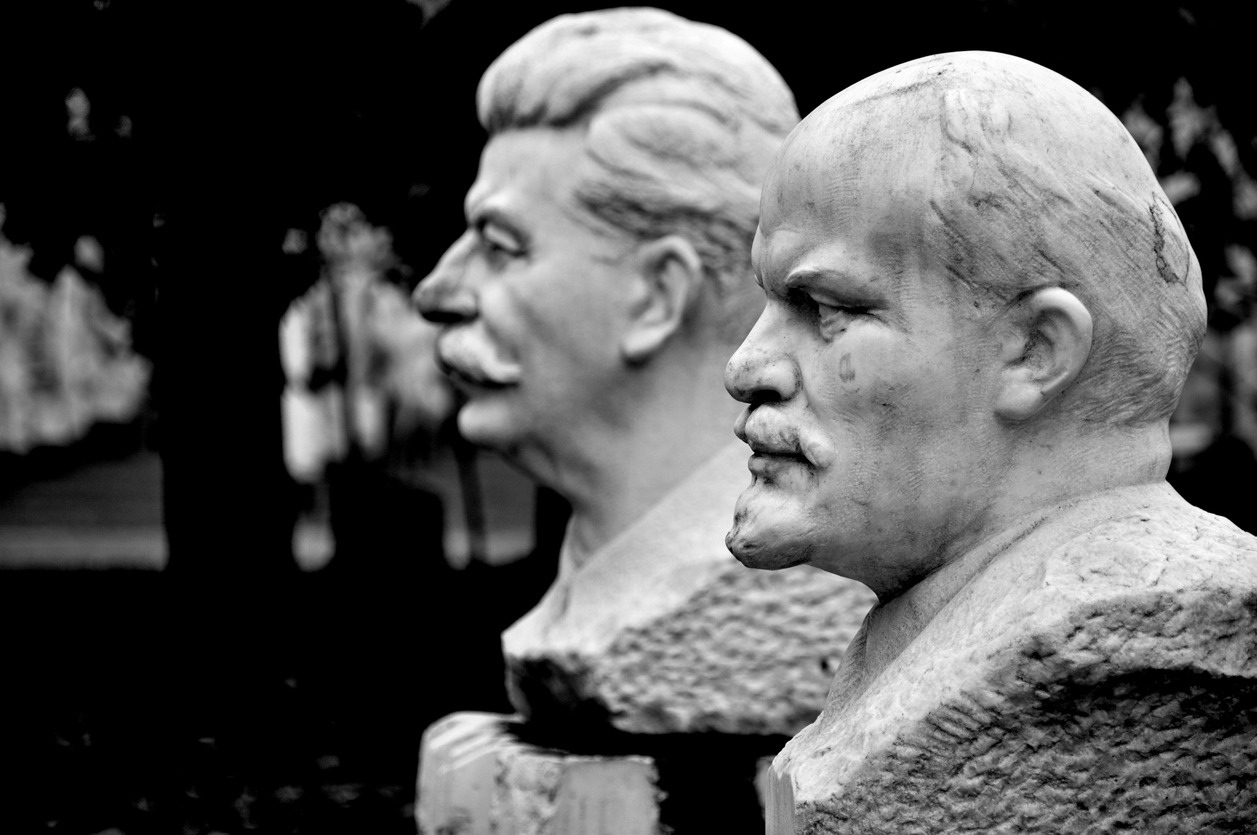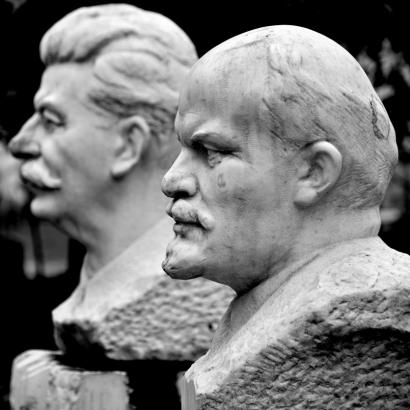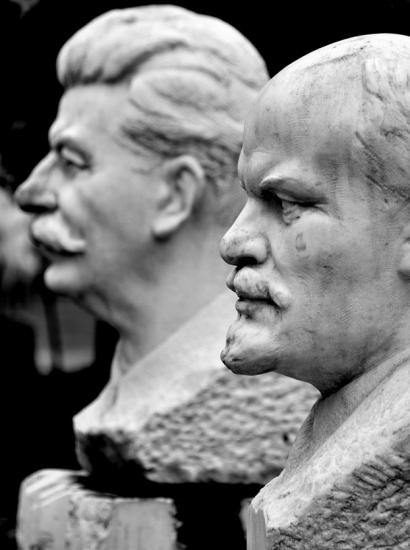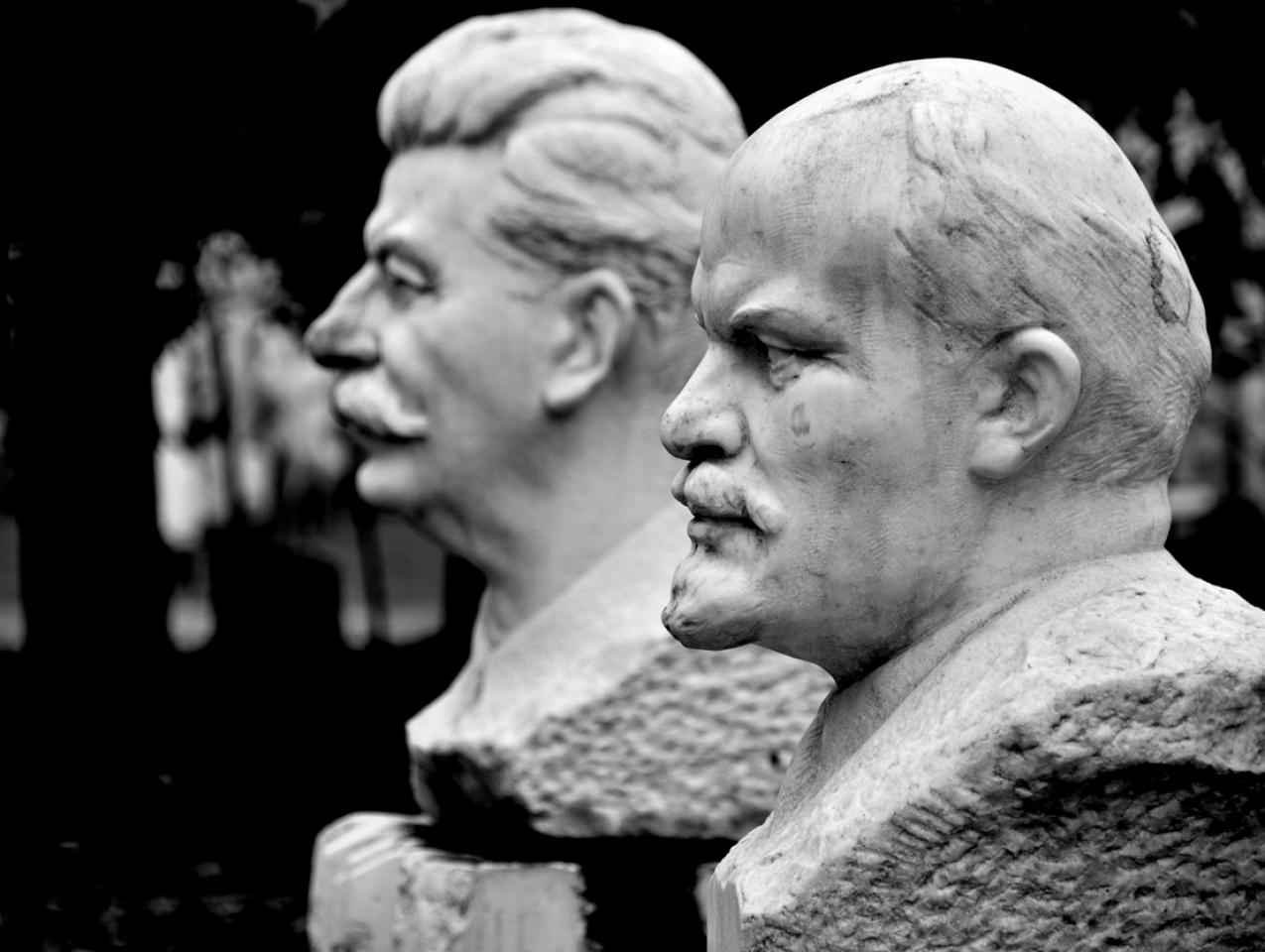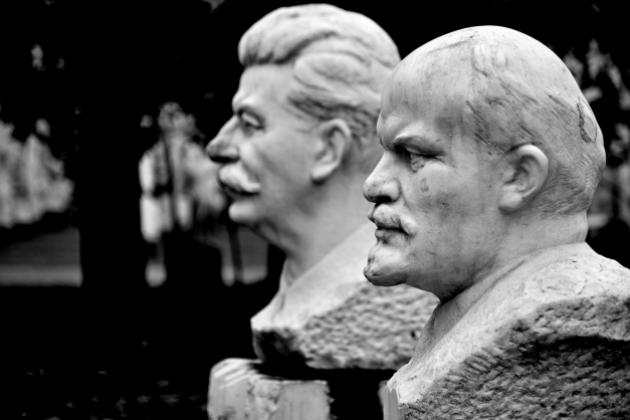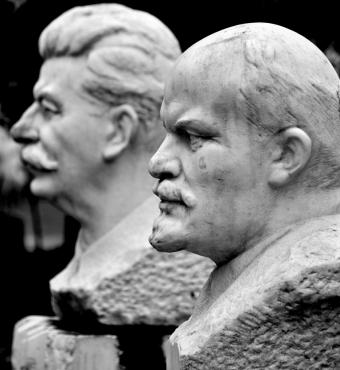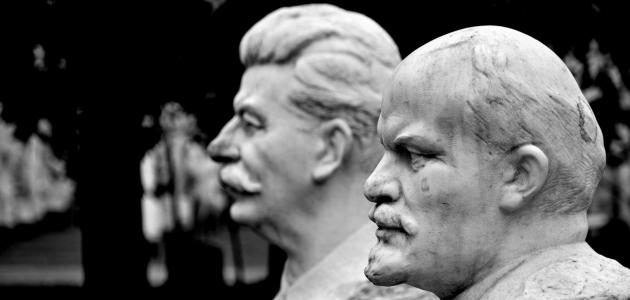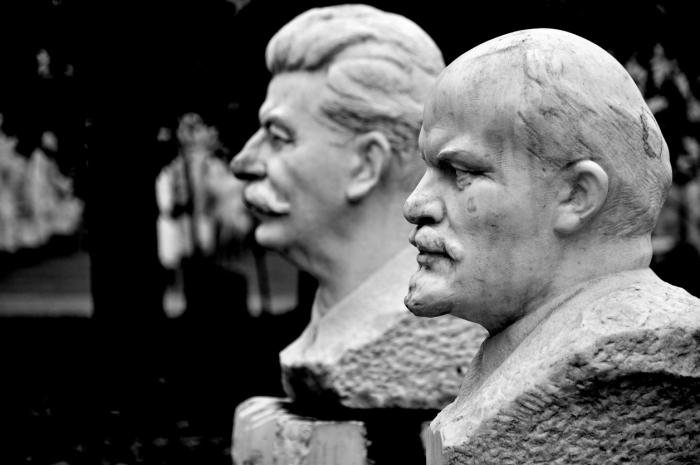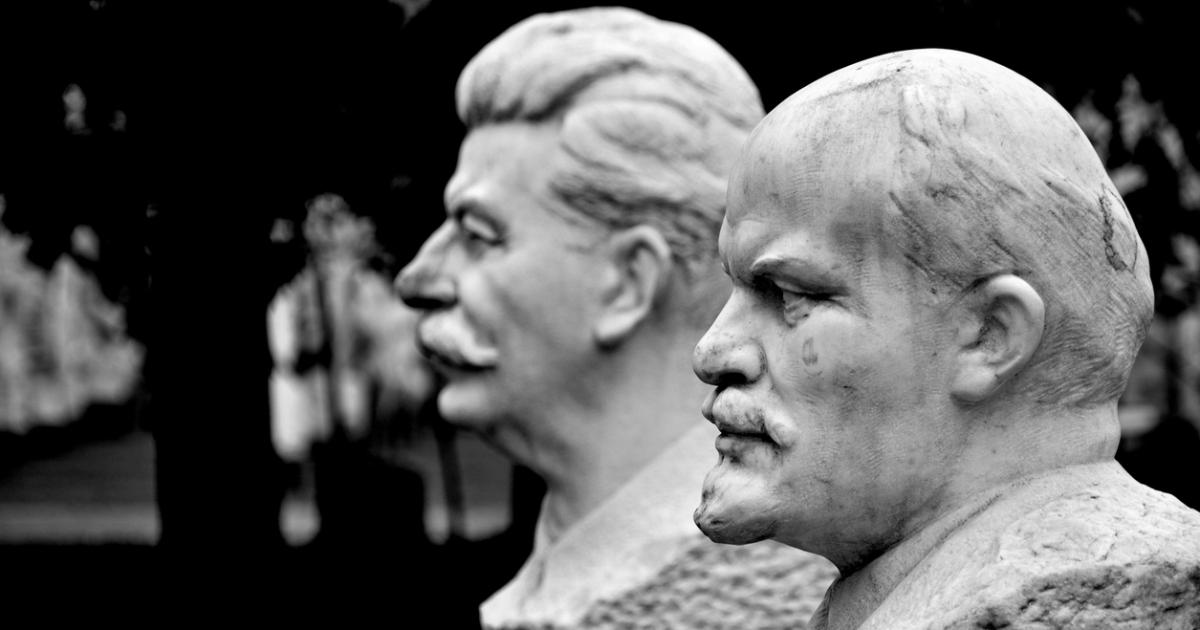On January 21, 1924, Vladimir Ilich Lenin, the incapacitated Russian leader, succumbed to a fourth and fatal stroke. Ilich, as he was universally known, died in the countryside outside Moscow in Gorky, surrounded by his doctors, wife, and sister. Other than in an inconclusive “political testament,” Ilich had not named a successor; his death triggered a bloody power struggle that was not resolved until the late 1920s.
Ilich had headed the Soviet government as chair of the Central Executive Committee. He also presided over the Politburo as “first among equals,” originally comprised of five members, including Josef Stalin and Leon Trotsky. Nikolai Bukharin, the young editor of Pravda, joined in 1926. He was popular among the Bolshevik rank and file, purportedly named the “golden boy” of the party by Lenin himself. Stalin held the post of general secretary of the Central Committee, then considered a boring desk job. But, as general secretary, Stalin could call meetings, interpret rules, and take care of the party elite. One bizarre task was to reject a request by the family of the incapacitated Ilich for poison to end his miserable existence.
Although Ilich’s demise was met with considerable wailing and gnashing of teeth, these were mainly crocodile tears. Ilich was far from the colossus of the Lenin legend. Ilich was of short stature and had peculiar mannerisms and a lack of humor. He could be petty at times and had a lackluster speaking voice. In his classic Ten Days That Shook the World, John Reed described Lenin as: “A short, stocky figure, with a big head set down in his shoulders, bald, and bulging eyes . . . dressed in shabby clothes.”
Although Bukharin claimed a close father-son relationship with Ilich, both esteemed their own intellectual capabilities, and theirs became a battle of egos. In exile, Ilich jealously controlled money contributed by European social democrats. When Bukharin and colleagues raised their own funds, Ilich insisted on handling the money. He withheld honoraria from Bukharin until he changed his essays to suit his patron. Their relationship smoothed over only as the Bolsheviks raced to Petrograd as the Tsarist government fell.
Stalin had his own beef with Ilich. The “raw” Stalin had little sympathy for the theoretical ramblings of Lenin and his émigré colleagues. For a seasoned bank robber, thug, and terrorist like Stalin, theory was a waste of time. Stalin disdained those who sat out exile in cushy European comfort. Stalin relished his nickname of “Koba”—a legendary bandit of the Caucasus.
Battle of the brains
Stalin’s rivals were unprepared for the rough and tumble of a power struggle to the death. The egotistical and aloof Trotsky counted on being crowned for his exploits in the civil war. He made little effort to even hold on to his position as Red Army commissar when challenged. Bukharin counted on his popularity within the party and his claimed close relationship with father figure Lenin. With the wide circulation of his co-authored ABC of Communism, his blueprint for the socialist economy, he laid claim to be the successor of Ilich. Bukharin, by chance, happened to be at Ilich’s bedside as he expired—a fact that upset Stalin and one he attempted to expunge from the history books.
Stalin’s succession plan was based on exploiting the legacy of the dead leader. Ilich was to be immortalized on a pedestal, equal to Marx. Staging Ilich’s body in an imposing Kremlin Square mausoleum in Moscow was integral to the plan. Stalin accordingly ignored the wish of Ilich’s family for a traditional burial next to his mother in Petrograd. Second, Stalin would position himself as the only true interpreter of both Lenin and Marx. Ilich’s voluminous and often contradictory writings were to be deposited in a “Lenin Institute” under Stalin’s control, enabling him to pick and choose those writings that advanced his own agenda. Third, as the true interpreter of both Lenin and Marx, Stalin could set the party line. Anyone who disagreed was guilty of “deviation” and “splitting the party.” If party reprimands did not cure the deviationists, there would later be the executioner’s bullet.
Once in the Kremlin, Stalin took over Ilich’s patronage system. He distributed sealed envelopes of cash to Kremlin wives, assigned them the best doctors, decided who would get the best apartments in the Kremlin’s Senate House, and determined whose children could attend the party school for the elite, a short walk from the Kremlin.
Lenin’s brain also formed an integral part of Stalin’s immortalization of Ilich, a tale that is fleshed out in the Hoover Institution Library & Archives. The brain story begins three months after Ilich’s passing, with two of Stalin’s operators plotting to give Stalin physical proof that Ilich had the brain of a genius. (A tall order after four debilitating strokes.) They proposed to the Politburo, with Stalin present, to “export” Lenin’s brain to Professor Oskar Vogt of the Neurobiological Institute of the Kaiser Wilhelm Institute of Berlin, as the “only world specialist on this question.” Their mistake was obvious to Stalin: whether Lenin was a genius or dullard would be decided by a foreigner! The proposal was promptly vetoed. The brain was to stay in Moscow, but “to allow Vogt to export and study one specimen of the brain.” Vogt himself warned that if the brain was not stored properly (such as at his Berlin institute), it would deteriorate quickly. Vogt departed Moscow with his cargo of one thin slice of the brain.
For Stalin, danger lurked in the fact that Vogt, now the nominal head of the Moscow Brain Institute, listed his affiliation as head of both the Moscow and Berlin institutes. Such an arrangement was a potential nightmare for Stalin’s plans—a world-renowned scientist who could issue a verdict on Lenin’s genius, or lack thereof, with the apparent stamp of approval of the Soviet side.
Vogt had to be contained, but without causing an international incident in the scientific community. A January 28, 1928, “report memo” that circulated within the Red Army bears all the markings of a Stalin operation. The report complains that Vogt’s published work “does not satisfy the requirements of our neuropathologists and does not appear to be sufficiently scientifically grounded.” The report ends with a suggestion to use Soviet brain scientists “whose erudition is comparable to Vogt’s.”
Another report to Stalin of April 10, 1932, intensified the campaign to get rid of Vogt: it claimed that Vogt was holding lectures comparing “Lenin’s brain with those of criminals and assorted other persons.” Moreover, a Professor Spielmeyer was claiming that Lenin’s pyramidal cells were characteristic of mental retardation. “In this connection, a number of evil remarks about Comrade Lenin have begun to appear in the European press,” the report claimed.
Stalin had set the table for removing Vogt, but the Vogt problem was solved by none other than Hitler. In response to rumors that Vogt had fallen out of favor with Hitler, Stalin dispatched Comrade S. V. Sarkisov, the acting director of the Moscow Brain Institute (nominally still headed by Vogt) to check things out. Writing in a 1936 memo, Vogt confirmed that Vogt had been removed from his Berlin post and his case had been turned over to the Gestapo. Vogt was drafted into the army as a private despite being in his sixties. By some near miracle, he survived.
Vogt was out, thanks to Hitler. Now there would be no scandal if Vogt’s ties to Moscow were severed. In fact, Vogt praised the Moscow Brain Institute’s growing collection of brains of key figures from the sciences and arts, such as the recently deceased Nobelist I. V. Pavlov. Instead of comparing Lenin’s brain with ordinary people or criminals as Vogt had done, the Moscow scientists could now compare him with peers.
At last, Comrade Sarkisov was now ready to “state the results of its research on the brain of V. I. Lenin.”
Sarkisov’s faded and scarcely legible report is full of scientific jargon, but its message is clear: the Brain Institute had done thorough work (153 pages and fifteen albums, and 30,953 brain slices). Lenin’s brain had been compared with the brains of ten “average people” and of leading Soviet figures. The report concludes that Lenin’s brain “possessed such a high degree of organization that during the time of his illness, regardless of the great damage, it functioned at a high level.” Ilich was a genius even as he lay a near vegetable in the Gorky sanatorium.
Short on “geniuses”
As the self-proclaimed grand interpreter of Lenin and Marx, Stalin claimed that he was building socialism according to the intent of the two titans of communism. The task would not be easy. Market resource allocation would have to be replaced by “scientific planning.” A new type of Homo sovieticus had to be created. With planning by the best and brightest, any failure of the plan must be the work of the enemy, who must be purged. If the building of socialism was a task for geniuses, Trotsky noted skeptically, there were altogether too few geniuses to go around: “Lenin was a genius, a genius is born once in a century, and the history of the world knows only two geniuses as leaders of the working class: Marx and Lenin.” All was not lost, however: “The party can try as far as possible to make up for the genius, as long as [Ilich] is not with us, by doubling its collective exertions.”
Stalin himself warmed to the idea of the Soviet leader-genius. Stalin first looked down on armchair “Bolshevik theorists,” yet once in power, he accumulated a massive library in his cramped Kremlin apartment. He set ambitious daily reading targets. His annotations appear in hundreds of books. Despite his earlier scorning of those dabbling in socialist theory, he required colleagues to study Marxism-Leninism before they could be promoted.
Stalin’s effort to create a cadre of “scientific Marxists” did not survive long. During the Great Terror of 1937–38, Stalin wiped out most of his fellow Old Bolsheviks. They were replaced by a younger generation, who occupied the empty offices of those silenced by an executioner’s bullet. Those Old Bolsheviks who survived—Molotov, Kaganovich, Kalinin, Mikoyan—did so by anticipating what the dictator wanted. There was no talk of genius among them, and no grim reaper to come for their brains.
Killing to survive
Ilich and Stalin were both examples of Friedrich Hayek’s argument that the worst rise to the top in a communist state. The victors in the inevitable power struggle win because they are better at violence, intrigue, and betrayal than their rivals.
Some argue that a healthy Ilich would have been a benevolent dictator, disregarding the fact that the second decree Ilich signed in early 1918 was for the Red Terror, under which tens of thousands were executed and imprisoned. With his 1937 Decree No. 00447, Stalin too embarked on mass murder and advanced those who did not hesitate to repress friend and family member alike, including wives. By killing his Old Bolshevik friends and ordinary citizens, Stalin was just following a path of historical necessity. Ilich did not live long enough to test his own limits of violence and cruelty. A healthy Ilich would have been bound to go up against the violent Koba. An interesting hypothetical, but impossible to answer.







